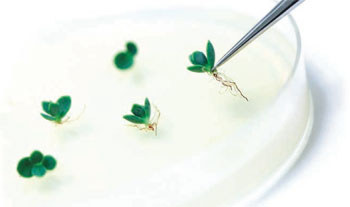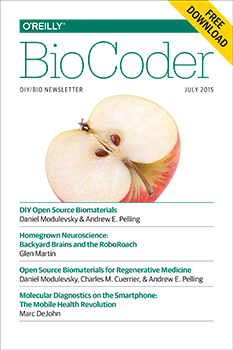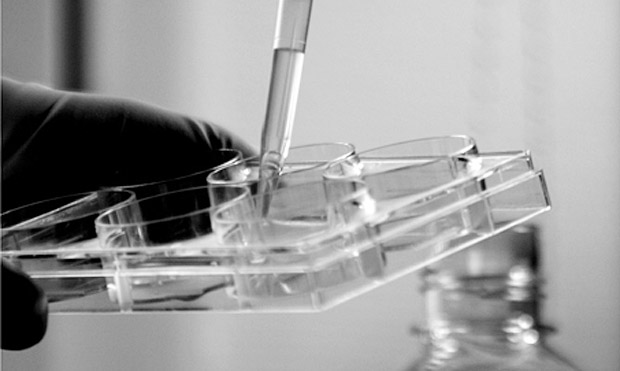"biotech" entries

Announcing BioCoder issue 8
BioCoder 8: neuroscience, robotics, gene editing, microbiome sequence analysis, and more.
Download a free copy of the new edition of BioCoder, our newsletter covering the biological revolution.
We are thrilled to announce the eighth issue of BioCoder. This marks two years of diverse, educational, and cutting-edge content, and this issue is no exception. Highlighted in this issue are technologies and tools that span neuroscience, diagnostics, robotics, gene editing, microbiome sequence analysis, and more.Glen Martin interviewed Tim Marzullo, co-founder of Backyard Brains, to learn more about how their easy-to-use kits, like the RoboRoach, demonstrate how nervous systems work.
Marc DeJohn from Biomeme discusses their smartphone diagnostics technology for on-site gene detection of disease, biothreat targets, and much more.
Daniel Modulevsky, Charles Cuerrier, and Andrew Pelling from Pelling Lab at the University of Ottawa discuss different types of open source biomaterials for regenerative medicine and their use of de-cellularized apple tissue to generate 3D scaffolds for cells. If you follow their tutorial, you can do it, too!
aBioBot, highlighted by co-founder Raghu Machiraju, is a device that uses visual sensing and feedback to perform encodable laboratory tasks. Machiraju argues that “progress in biotechnology will come from the use of open user interfaces and open-specification middleware to drive and operate flexible robotic platforms.” Read more…

Democratizing biotech research
The O'Reilly Radar Podcast: DJ Kleinbaum on lab automation, virtual lab services, and tackling the challenges of reproducibility.
The convergence of software and hardware, and the growing ubiquitousness of the Internet of Things is affecting industry across the board, and biotech labs are no exception. For this Radar Podcast episode, I chatted with DJ Kleinbaum, co-founder of Emerald Therapeutics, about lab automation, the launch of Emerald Cloud Laboratory, and the problem of reproducibility.
Kleinbaum and his co-founder Brian Frezza started Emerald Therapeutics to research cures for persistent viral infections. They didn’t set out to spin up a second company, but their efforts to automate their own lab processes proved so fruitful, they decided to launch a virtual lab-as-a-service business, Emerald Cloud Laboratory. Kleinbaum explained:
“When Brian and I started the company right out of graduate school, we had this platform anti-viral technology, which the company is still working on, but because we were two freshly minted nobody Ph.D.s, we were not going to be able to raise the traditional $20 or $30 million that platform plays raise in the biotech space.
“We knew that we had to be much more efficient with the money we were able to raise. Brian and I both have backgrounds in computer science. So, from the beginning, we were trying to automate every experiment that our scientists ran, such that every experiment was just push a button, walk away. It was all done with process automation and robotics. That way, our scientists would be able to be much more efficient than your average bench chemist or biologist at a biotech company.
“After building that system internally for three years, we looked at it and realized that every aspect of a life sciences laboratory had been encapsulated in both hardware and software, and that that was too valuable a tool to just keep internally at Emerald for our own research efforts. Around this time last year, we decided that we wanted to offer that as a service, that other scientists, companies, and researchers could use to run their experiments as well.” Read more…

A commitment to biotech, in action
"I eat, breathe, live biotech,” says Ryan Bethencourt. “It’s really all I do at this point.”
This story is part of our ongoing exploration of synthetic biology and the DIYbio movement. Learn more by downloading a free edition of BioCoder.
Ryan Bethencourt seized his opportunity back in 2008. That made him an outlier: most people, after all, were seizing pink slips, not opportunities. But while the Great Recession wiped out billions in home equity and blew up companies by the score, it also freed up plenty of hard assets. In simple terms, you could buy a lot of expensive stuff for a song. And that’s just what Bethencourt and his pal, molecular biologist and fellow DIYbio enthusiast, John Schloendorn, did.
“The financial crisis resulted in the liquidation of a big chunk of the biotechnology sector,” says Bethencourt, a molecular geneticist-cum-biotech entrepreneur who was working as a business development director for a clinical research organization at the time. “So we bought up a lot of research-grade equipment. We felt we couldn’t afford to pass it up.” Read more…

Synthetic biology on the cusp
Oliver Medvedik on the grassroots future of biohacking and the problems with government overreach.
 Whither thou goest, synthetic biology? First, let’s put aside the dystopian scenarios of nasty modified viruses escaping from the fermentor Junior has jury-rigged in his bedroom lab. Designing virulent microbes is well beyond the expertise and budgets of homegrown biocoders.
Whither thou goest, synthetic biology? First, let’s put aside the dystopian scenarios of nasty modified viruses escaping from the fermentor Junior has jury-rigged in his bedroom lab. Designing virulent microbes is well beyond the expertise and budgets of homegrown biocoders.
“Moreover, it’s extremely difficult to ‘improve’ on the lethality of nature,” says Oliver Medvedik, a visiting assistant professor at The Cooper Union for the Advancement of Science and Art and the assistant director of the Maurice Kanbar Center for Biomedical Engineering. “The pathogens that already exist are more legitimate cause for worry.” Read more…

DIYbio and the hacking metaphor
Definitive answers require further testing
The following is from the second issue of BioCoder, the quarterly newsletter for synthetic biologists, DIY biologists, neurobiologists, and more. Download your free copy today.
Within DIYbio, one cannot escape the hacking metaphor. The metaphor is ubiquitous and, to a point, useful. The term connotes both productive play with an existing technology aimed at improvement and, at the same time, play with sinister undertones. In this sense, hacking captures the promise and pitfalls of the dual uses any mature technology might be put to, whether that technology is as dramatic as nuclear power/weapons or as mundane as a free/premium software license. But every metaphor has its limits. Pushed too far, metaphors break down, and instead of illuminating, they obscure. Which brings me to ask: how far can the hacking metaphor be pushed within DIYbio—at least the part of DIYbio falling in line with synthetic biology?

Academic biology and its discontents
Disaffected grad students and postdocs increasingly turn to DIYbio to do work that makes a difference.
When we started BioCoder, we assumed that we were addressing the DIYbio community: interested amateur hobbyists and experimenters without much formal background in biology, who were learning and working in independent hackerspaces.
A couple of conversations have made me question that assumption — not that DIYbio exists; it’s clearly a healthy and growing movement, with new labs and hackerspaces starting in most major cities. But there’s another group mixed in with the amateurs, with a distinctly different set of capabilities and goals. DIYbio doesn’t mean exactly what we thought it did.
That group is what I broadly call “disaffected grad students and postdocs.” They’ve got training, loads of it. But they’ve spent the last few years working in a laboratory under a faculty member, furthering that faculty member’s agenda. They have their own ideas and their own research projects, but they can’t work on them within the context of academic biology. They’re funded by a grant, and the grant will only pay for certain things. And, as Anthony Di Franco points out in “Superseding Institutions in Science and Medicine” (in the current issue of BioCoder), grants are primarily given to people who already know what they’re going to find, and that is not how you get truly innovative and creative research. Read more…

Biotech’s Cambrian Era
Announcing BioCoder, an insider's review of DIY biotech
As I write this article, I’m reflecting on the long expanses of otherworldly playa I’ve just left, watching sandstorms pass in front of me while in altered mental states and contemplating the future of our beloved biotech industry.
I have, until recently been living a double life with one foot in the corporate biotech world and another deeply in the world of biohacking/radical science (working on DIY biolabs and equipment, longevity research, and ALS therapeutic development). I believe in the principles of citizen science and shared (or at least leaky) IP as a means of accelerating scientific progress, but I felt I needed to play my part in the “real” biotech industry. That changed three months ago when I realized that to create the innovation we want in biotech, we may have to burn the bridges that got us here and re-create it ourselves, with or without the dinosaur the current biotech industry has become.

